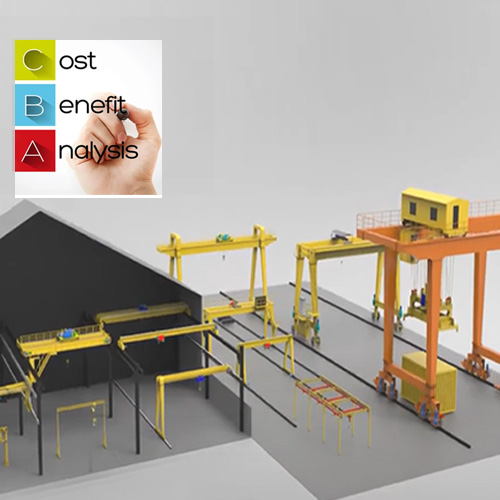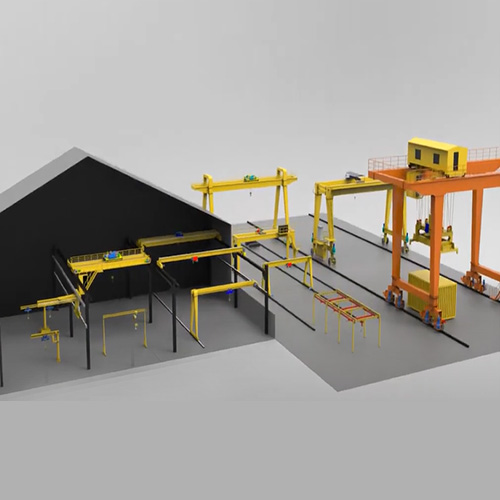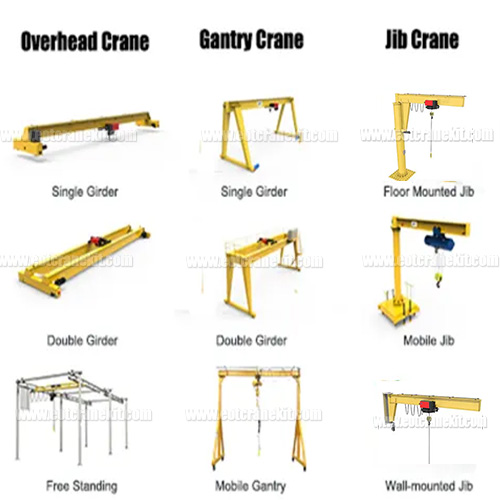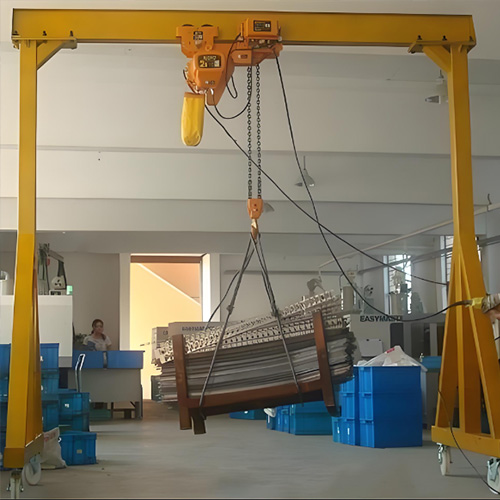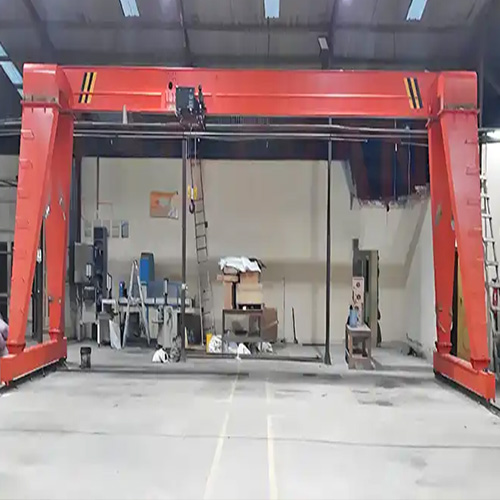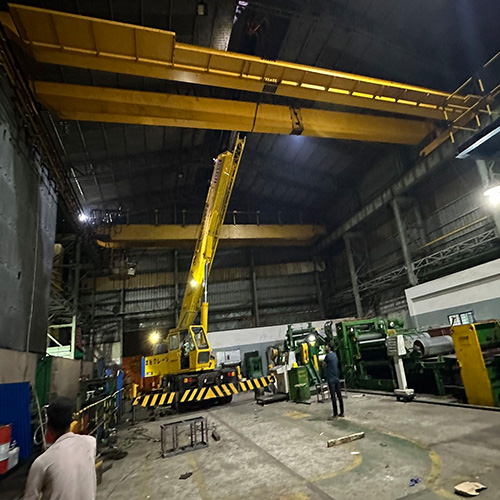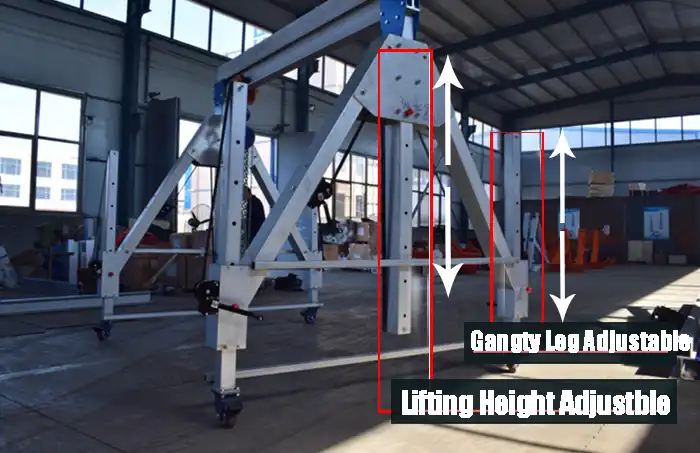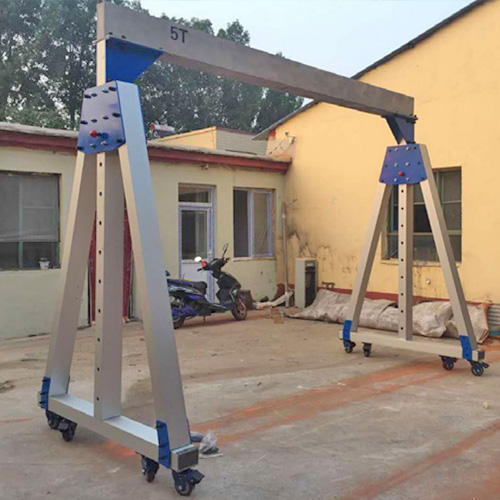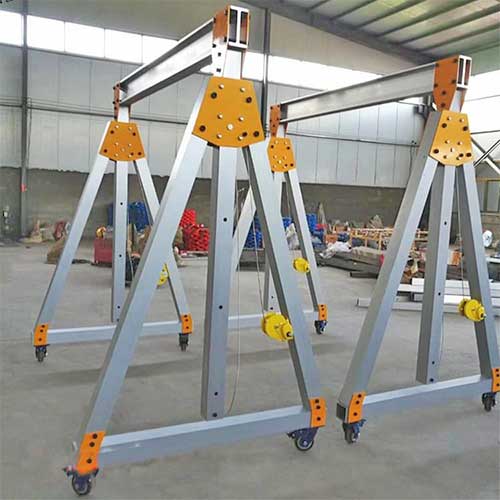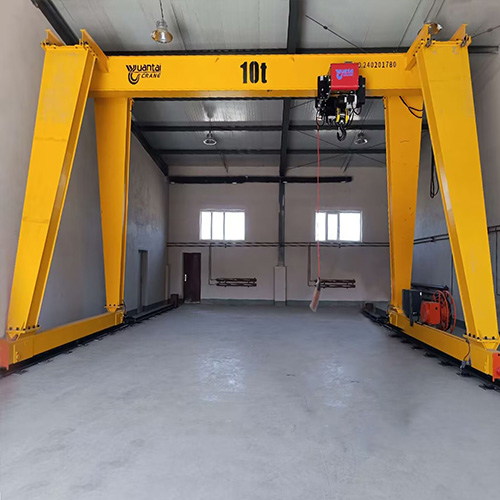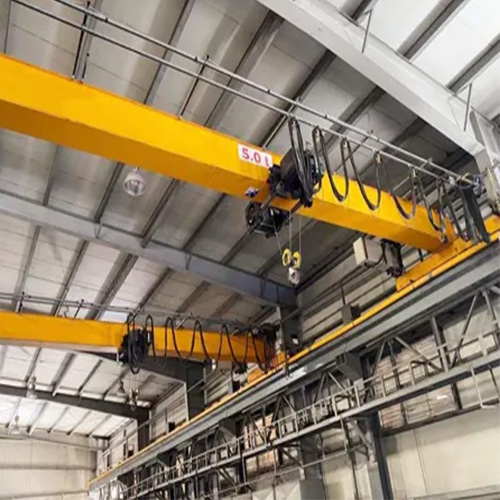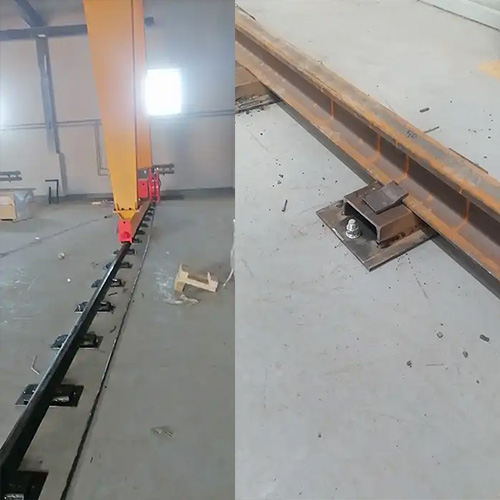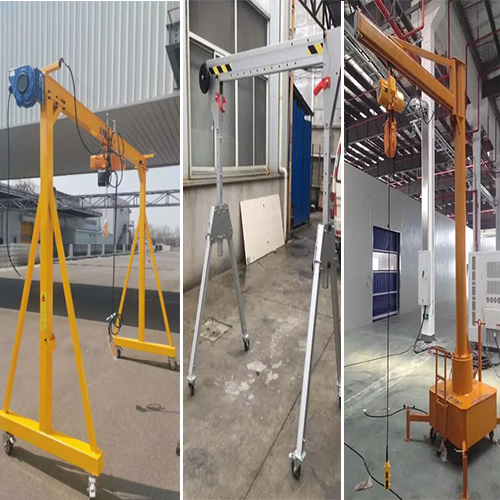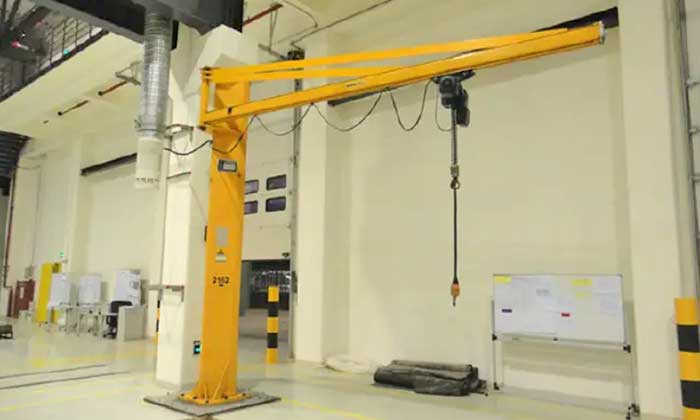
Foundationless Jib Crane for Sale, Cheap Freestanding Jib Crane
Foundationless jib cranes or Jib cranes without foundations are freestanding jib cranes that are slab-mounted and bolted to 150mm unbreakable concrete for indoor use. These kinds of jib crane systems can be installed almost anywhere in a facility as long as the location satisfies the manufacturer's requirements and doesn't require a special poured foundation.
Because no special foundation is required, these foundationless jib cranes systems can be installed more quickly because there is no need for a poured concrete foundation to cure. If necessary, they can be easily relocated within a facility.
Main parameters of foundationless jib cranes
- 3-5Meter spans
- Capacities up to 1 ton
- 360° rotation
- Boom heights up to 6 Meter
Freestanding foundationless jib cranes are appealing for specific applications due to features such as portability, ease of installation, and cost-effectiveness.
Why are foundationless freestanding Jib cranes preferred over Normal Jib cranes?
What is a jib crane?
The first thing to keep in mind is that this form of foundationless jib crane shares many features with the standard jib cranes, which are one type of overhead material handling cranes. They can be equipped with equipment and accessories for specialized applications, and they are typically seen at workstations for repetitive production line activities. Jib cranes do have a variety of uses and work well in circumstances with larger material handling; they frequently are used in conjunction with electric overhead traveling (EOT) cranes to move loads and objects over the width and length of a building structure.
Jib cranes are widely used to improve productivity and safety since they are frequently installed for usage by a single person throughout the day, maybe to eliminate the need for human handling.
Jib cranes are simple to operate and very simple to maintain in comparison to many other material handling systems. Regular jib cranes come in a wide range of types and styles and have a large capacity range from 0.25 - 15 tons. A freestanding jib with multiple mounting possibilities is probably the most popular design. These jib cranes are capable of achieving the largest capacities, spans, and lift heights. When referring to height under boom, we term "HUB."
What makes it a foundationless jib crane?
The main distinction between foundationless jib cranes and other freestanding jib cranes is that the former don't require any particular poured foundations. And because of it, they may be placed wherever in a building. A foundationless jib crane can be installed anyplace it increases production efficiency and safety in an industrial setting, provided the experts provide their approval.
Foundationless jib cranes have a base plate with a wider diameter.
Consider them to have more 'upright material' to assist in relocating the forces created during lifting. If you picture a foundationless jib crane, you'll understand why they're only available in lower capacities; we provide 1/2-ton and 1-ton versions are available.
Please contact us if you are interested in larger cranes with longer spans and higher heights.
The table below will explain the distinction between a foundationless freestanding jib crane and a Standard Jib Crane. You will learn why a freestanding jib crane is always preferred due to its superior functionality and convenience.
Freestanding jib crane without foundation |
Normal Jib Crane with foundation |
|
|
Downtime is shorter than with a freestanding jib crane. It is more efficient and faster. The installation procedure is straightforward and takes little time. |
The installation procedure is lengthy. Curing and processing the jib crane foundation takes several days. |
Because installation and cure are simpler and faster, it costs less to use. |
A freestanding jib crane costs significantly more than a foundationless one due to the complexity and length of installation and cure. |
The basic feature of a foundationless freestanding jib crane is flexibility. It provides excellent operational and installation flexibility. A foundationless jib crane may be moved more easily. |
Installing and moving a Jib crane that has a foundation is highly difficult. The handling is complicated and the relocation is highly expensive. |
A foundationless jib crane has significantly more lifting capacity than a freestanding one. It reduces the amount of disruption at work. |
It has less working power because installing it necessitates coordinating contractors, synchronizing multiple schedules, and potentially shutting down production for a period of time. |
Features of free standing foundationless jib crane
A foundationless freestanding jib crane's exceptional qualities increase its comfort and usefulness. A rolled steel I-Beam that rotates 360 degrees makes up the main structure of the jib crane. The I-Beam has a tapered flange installed on it that makes it easier for the trolley to move along. For the secure ends of the cantilevers, there are safety end plugs. It ensures that the trolley is completely within the operator's control.
Benefits of freestanding foundationless jib crane
- Flexibility: Among all jib crane types, the foundationless freestanding jib crane offers the most flexibility. Since there is no poured foundation, moving it is simple. It is portable and may be used anywhere. There is no need for a pour of concrete.
- Easy installation: A foundation must be poured and allowed to cure for several days or weeks. A foundationless jib crane thus expedites the pouring and curing processes.
- Cutting costs: A foundationless jib crane does not require the additional expense needed for a concrete slab pour.
- Location Control Where there isn't a poured foundation, a jib is simple to move. Therefore, there will be more flexibility in selecting the initial jib placement. Since a concrete pour doesn't require a lot of space, you can place it closer to machinery or other obstacles. You can quickly move the jib to suit your changing needs if your operations flow changes.
Limitations of using a foundationless jib crane with free standing design
- The floor of the concrete structure on which the jib crane is to be installed must be at least 150 mm thick.
- A reinforced concrete floor is required.
- The distance between the centerline of the jib and a wall or junction must be 600 mm.
- The minimum soil pressure should be around 1.1 tons per square foot.
- The concrete must be three meters wide, free of walls, seams, and fissures.
- Jib mounting requires chemical anchor bolts that can sustain a minimum pullout force of 1.5 tons.
- The manufacturer's installation instructions must be followed, and the concrete pressure must be 1.36 Tons per square foot.
- For improved safety precautions, the system and related machines should be inspected at least once a year.
Capabilities of a foundationless freestanding jib crane
The freestanding, foundationless jib crane can be used both inside and outside. It has a 15-ton lifting capacity. A free-standing jib crane can move things up, down, and forward and backward. Low percentages of impact for hoist and trolley weight are used in the customized boom or I-Beam design. The pipes are designed to be as strong as possible without bending, buckling, or crushing. The boom may be worn by the trunnion roller assembly.
A foundationless freestanding jib crane is one of the most cost-effective and user-friendly lifting equipment. The simpler installation process makes it more appealing.
Foundationless jib cranes are shipped with everything required to complete installation.
Applications of foundationless jib cranes
This foundationless jib crane's applications include machining and assembly operations, outdoor use such as loading docks, and combining with other jib cranes to provide staged coverage.
And it's all possible without the need to dig foundations or commit to a long-term position. Because warehouses, distribution centers, production lines, and so on are constantly changing, many people are opting for foundationless options. A jib crane isn't always required for a number of years in the same location, and the ability to install one that can be easily moved later is a luxury. You can saw the bolts and relocate the jib crane.
Questions to ask to ensure foundationless jib cranes safety
Foundationless Jib cranes, sometimes referred to as industrial slab-mounted jib cranes, are fastened to a concrete floor by means of bolts. Utilizing the current floor eliminates the need to invest in an expensive specialty foundation. Additionally, since you don't have to wait for the concrete to cure, you may install and use the system sooner. For jib cranes with a smaller capacity and shorter span, using the current floor makes sense. But only if the 6-inch-thick concrete has adequate strategically placed steel reinforcing is there a limit to how large a crane may be erected securely.
Before anchoring any crane to a concrete floor, extreme caution must be used to ensure worker safety because concrete is extremely brittle and has almost no strength when loaded in tension. When concrete is overloaded, it can crack catastrophically, dropping loads or, worse yet, toppling the crane. Calculations must be made to guarantee that the concrete floor can securely support the crane's rated capacity before a foundationless jib crane is selected. These calculations guarantee the safety of your employees from disastrous concrete failures.
Below are some questions to ask before purchasing a foundationless jib crane:
What is your concrete floor strength?
Does the sales brochure of the crane manufacturer state that the "customer is responsible for determining concrete strength"? If this is the case, you will need to hire a local structural engineer to perform all of the calculations necessary to determine whether your existing concrete meets all of the International Building Code's safety requirements (IBC).
What is the steel reinforcement of your jib crane?
Has the crane manufacturer provided the minimal steel reinforcement thickness, diameter, and spacing necessary to protect the safety of your employees? Concrete must contain a minimal amount of steel to be strengthened and protected from catastrophic failure while in use. Concrete can suddenly and completely fail if there is insufficient steel reinforcement or if a tiny wire mesh is used. If the steel sizes are not mentioned, it is most likely because you are in charge of carrying out the necessary calculations to establish the safe quantity of steel needed to protect the safety of your employees.
What is the mounting design of the jib crane?
Has the crane manufacturer provided the minimal concrete dimensions (height, width, and square footage) needed to protect your employees? In order to operate safely and steadily, cranes need to be counterbalanced with an adequate amount of concrete. Insufficient counterbalance might result in a dangerous and unstable situation.
Has the crane's maker indicated the smallest distance at which the crane can be mounted away from a crack or seam in the concrete? The concrete becomes weaker the closer a crane is mounted to a seam or crack. To protect workers, it is always necessary to specify the absolute minimum safe distance.
Did the crane's manufacturer provide the bare minimum pullout force for bolts? In that case, refer to the answers to questions 1 and 2 above.
Ask the foundationless jib crane manufacturer whether they have the calculations conducted in accordance with the International Building Code to demonstrate the safety of the concrete floor they have specified if you're still unsure.
To maintain worker safety when using foundationless jib cranes, it is crucial to know the answers to the aforementioned questions. To find out if foundationless jib cranes are appropriate for your application, get in touch with us straight away if you have any queries.
Main type of jib cranes for sale
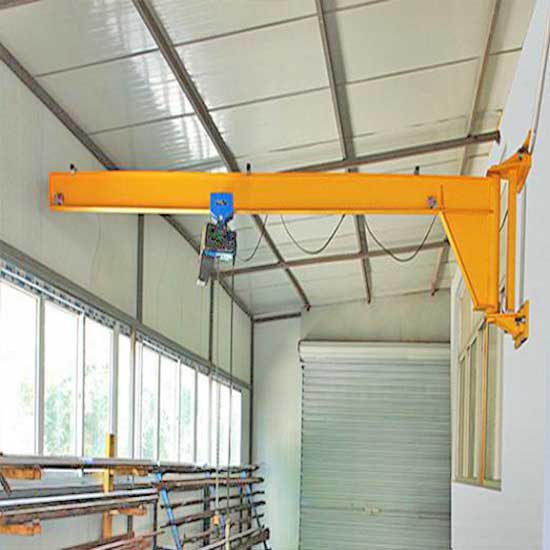
Wall Mounted Jib Crane
Wall mounted Jib Crane & wall bracket Jib Crane with I beam & tie rod design for light duty handling with capacity up 2 ton. or less building structure changes. Wall mounted Jib Crane for sale.
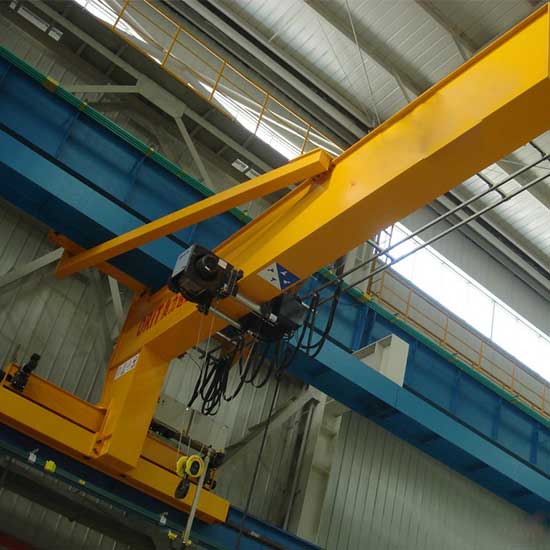
Wall Travelling Jib Crane
Wall travelling Jib Crane, a perfect & economical cantilever wall travelling crane for light & long distance lifting. Wall travelling Jib Crane, your efficient light duty crane!
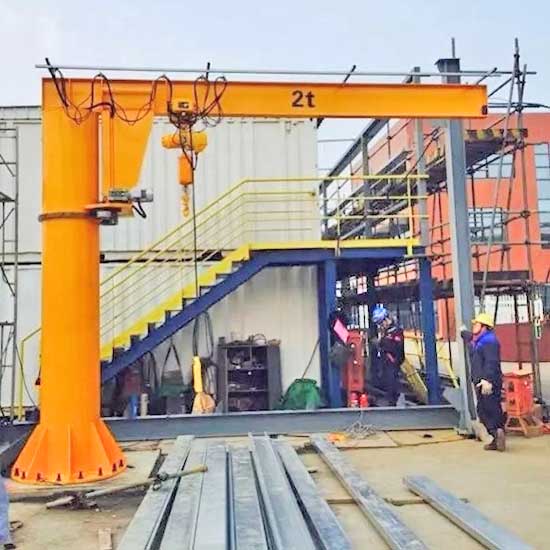
Pillar Jib Crane
Pillar mounted Jib Crane is a free standing Jib Crane with pillar jib mounted on floor, for short & crowded lifting, capacity up to 16 ton. Get pillar mounted Jib Crane design now!



